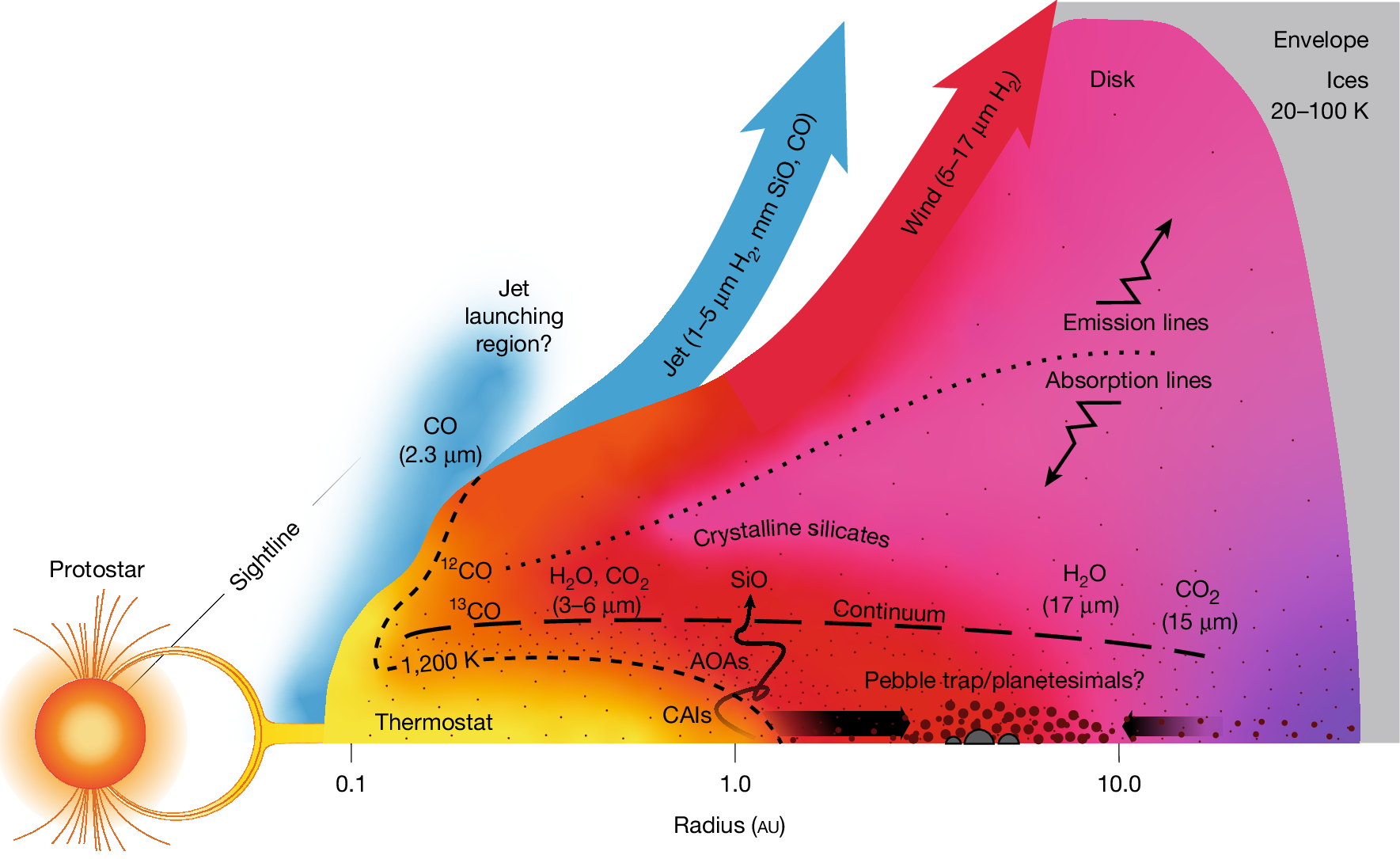Astronomer Discovers Planet Formation Around Young Star
The discovery of planet formation around HOPS-315 has significant implications for our understanding of planetary development, suggesting that the formation of rocky planets may be a common feature of planet formation, and providing a unique opportunity to study the birth of our own solar system.

Astronomers have made a groundbreaking discovery, capturing the initial stages of rocky planet formation around a young star similar to our sun, named HOPS-315, located 1,370 light-years away. Using the James Webb Space Telescope and the Atacama Large Millimeter/submillimeter Array (ALMA), scientists detected silicon monoxide gas and crystalline silicate minerals, key components of planet formation.
The star, HOPS-315, is only 100,000 to 200,000 years old, and its protoplanetary disc contains crystalline minerals that can clump together to form kilometre-sized "planetesimals", which eventually grow into full planets. This finding provides unprecedented insight into the early processes of planetary development and suggests that the formation of rocky planets may be a universal feature of planet formation.
The research team, led by Melissa McClure of Leiden Observatory, believes that this is a common process during the earliest stage of planet formation, and that the potential for a complex planetary system, similar to our own, exists. The discovery offers a rare glimpse into the early stages of planet formation, mirroring the location of our solar system's asteroid belt.
The detection of refractory solid condensation in an embedded protoplanetary disk has been observed for the first time using the James Webb Space Telescope (JWST) and the Atacama Large Millimeter Array (ALMA). The young protostar HOPS-315 was observed at infrared and millimeter wavelengths, revealing a reservoir of warm silicon monoxide gas and crystalline silicate minerals in its inner disk region.
This study provides insights into the early stages of planet formation and the role of refractory solids in the assembly of planetary systems, indicating that the formation of terrestrial planets and small bodies may be more universal than previously thought.